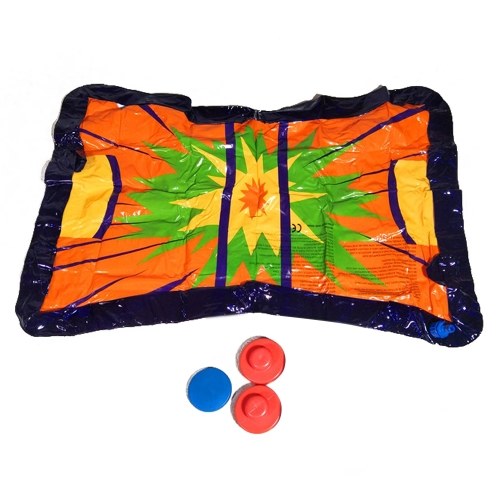Kostenlos
Unterstützung

Luxembourg & Adrennes Departure: 09.00 Duration : 11 Hours Languages available : English, French, Spanish Luxembourg is a modern and vibrant city with a rich history and impressive architecture. In the old part of city, our guide will take us to the cathedral, the Palace of the Grand Duke and the Place des Armes. In the lower part of the city you will enjoy a spectacular view of the Kirchberg district, home to several European institutions. In the valley, we will show you a trail of casemates, the abbey of Neunmünster, Wenceslas wall and the picturesque sites along the river Alzette. After some free time in the city, we visit the picturesque village of Dinant, with its fifteenth century collegial, its citadel and its tiny saxophone museum (optional). On the way back to Brussels, we follow leisurely the pretty Meuse Valley.
Dolphin Lagoon ™ Das Delfinschwimm-Erlebnis ist das Herzstück Ihres Besuchs. In der Lagune können die Besucher mit Delfinen schwimmen. Sie ist von Sandstränden und tropischer Vegetation umgeben. Nach einer Einführung über die Meeressäuger im flachen Teil der Lagune, können die Teilnehmer in Kleingruppen (nicht mehr als Personen) mit den Delfinen schwimmen und spielen und sich von der Kraft und der Anmut dieser einzigartigen Tiere verzaubern lassen. Kinder müssen mindestens 6 Jahre alt sein, um mit Delfinen zu schwimmen. Kinder im Alter von 6-12 Jahren müssen von einem zahlenden Erwachsenen begleitet werden, der ebenfalls am Delfinschwimmen teilnimmt Das Grand Reef® Ein Hektar großes Areal mit rund 10.000 Meerestieren - darunter 125 verschiedene Arten von Fischen wie Rochen, Muränen und Haien. Die Gäste können dort am weißen Sandstrand liegen, im flachen Wasser waten, im tieferen Wasser schwimmen oder inmitten der tropischen Fische schnorcheln. Explorer's Voliere Das rund 76 Meter lange und bis zu elf Meter hohe Vogelhaus stellt einen natürlichen Lebensraum für etwa 30 Arten tropischer Vögel dar. In drei Bereichen können Sie die Vögel sogar füttern und berühren! Wind-Away-Fluss Das Gewässer schlängelt sich durch fast den ganzen Park, vorbei an Stränden, baumgesäumten Wegen und Lagunen. Wer durch den Fluss schwimmt, trifft auf verschiedene Landschaften: den Strand einer sonnigen Insel, dichten tropischen Regenwald, einen Fluss, der an den Amazonas erinnert, ein tropisches Fischerdorf und eine Unterwasserhöhle. Wer durch den Wasserfall taucht, kommt in ein riesiges Vogelhaus, das etwa 300 farbenprächtige Tiere aus aller Welt beherbergt. Ruhe-Bucht Schneeweiße Strände gesäumt von Palmen, tropischer Vegetation und strohbedeckten Hütten. Jeder Gast findet sein privates Plätzchen auf dem weißen Sand, unter einem Schatten spendenden Sonnenschirm, in einer Hängematte oder auf einem Liegestuhl.
The stunning scenery will continue to amaze you as you arrive at the lake, Here you will have time to look around and to take a one hour trip in a kayak. Life jackets are provided and you can sail out and enjoy the surroundings, or, if you like you can stop off on a small island and have a rest. There are plenty of seats and a small cafe where you can buy drinks or snacks and the area is alive with people enjoying the good weather and the beautiful surroundings. The Siurana Lake is surrounded by spectacular sceneries of the Montsant Range It’s near Prades, a wine land, olive oil land and hazelnut bushes. After enjoying your time on the lake and you have taken lots of fantastic photos, it will be time to head back to your hotel. Your trip ends with a gift of a bottle of wine and a lot of happy memories. This is a wonderful private excursion exclusively for you and your family. This tour is only available weekends between November and March, subject to weather conditions
Aspectos destacados Admire la hermosa arquitectura y el encantador ambiente de Turín a su propio ritmo. Baje y suba a las principales atracciones cercanas: Piazza Castello y el Castillo Rivoli. Visite el Museo Nacional de Cine, el Museo Egipcio. Bájese y disfrute de un paseo entre los cafés art nouveau o deléitese con los deliciosos chocolates que se ofrecen, Turín y el resto de la región del Piamonte, donde se produce el primer chocolate en masa. Acceso a tres líneas/rutas El tour incluye Billete de 24h para autobús con paradas Audioguía en 8 idiomas (inglés, italiano, francés, alemán, español, portugués, chino y ruso) Entrada gratuita para menores de 5 años. Accesible para sillas de ruedas El tour NO incluye Recogida en hotel Entradas de las atracciones Comida y bebida Tenga en cuenta: En ocasiones, debido a eventos, es posible que no se garanticen algunas paradas; puede encontrar información actualizada sobre las paradas en las paradas de autobús o en la aplicación en línea.
Property Location You'll be centrally located in Anderstorp with a stay at Hotell Åsen, convenient to Anderstorp Raceway. This hotel is within the region of Reftele Golfklubb and Annebergsvagen Lake Swimming Area.Rooms Make yourself at home in one of the 32 guestrooms featuring minibars. Complimentary wireless Internet access is available to keep you connected. Private bathrooms with bathtubs or showers feature complimentary toiletries and hair dryers. Conveniences include phones, as well as desks and irons/ironing boards.Rec, Spa, Premium Amenities Take advantage of recreation opportunities such as a sauna or take in the view from a terrace and a garden. Additional amenities include complimentary wireless Internet access and tour/ticket assistance.Dining Grab a bite to eat at the hotel's restaurant, which features a bar, or stay in and take advantage of room service (during limited hours). Quench your thirst with your favorite drink at a bar/lounge.Business, Other Amenities Featured amenities include multilingual staff and luggage storage. This hotel has 3 meeting rooms available for events. Free self parking is available onsite.
Catégorie:Boîte de rangement; Matériau:Métal; Fonction:Zip étanche; Motif:Classique; date d'inscription:03/20/2020
